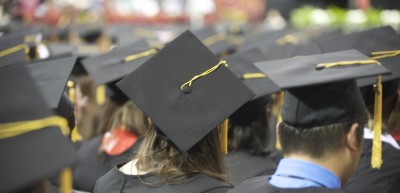Ayub Khan for BeyondHeadlines
The first report of the Standing Committee of the National Monitoring Committee for Minorities’ Education (NMCME) in India reveals important gains and yet continuing educational disparities for the country’s Muslim population. Released in April 2013, the report surprisingly hasn’t received the media and community attention it should have.
The report based on collation of data from various sources reveals that there have been some gains on the educational front. The access to school, measured on the availability of primary school within a walking distance of 1 km and upper primary school within a walking distance of 3 km, has vastly improved with no significant disparities between various socio-religious community groups.
 There has been remarkable increase in Muslim children enrolled in elementary schools from 2005-06 50 2011-12. As a percentage it has increased from 8.84 per cent to 12.97 per cent. However, it was also found that in several Muslim concentration districts the enrolment of Muslim children at elementary level is lower than their share in population. A true picture can be obtained if we have data which actually counts the total number of elementary school going children in the district and then takes the proportion of those who are enrolled. This data is presently unavailable.
There has been remarkable increase in Muslim children enrolled in elementary schools from 2005-06 50 2011-12. As a percentage it has increased from 8.84 per cent to 12.97 per cent. However, it was also found that in several Muslim concentration districts the enrolment of Muslim children at elementary level is lower than their share in population. A true picture can be obtained if we have data which actually counts the total number of elementary school going children in the district and then takes the proportion of those who are enrolled. This data is presently unavailable.
Regardless, one finds mindboggling disparities in many Muslim concentrated districts. In Rampur district of Uttar Pradesh Muslims constitute 49.14 per cent of the total population and yet their enrolment in elementary schools was only 2.80 per cent according to the District Information System for Education (DISE) data.
The participation of Muslims girls in elementary education is on par with boys. At the upper primary level one finds more girls than boys. While this suggests that fewer girls are dropping out it also indicates that the reverse is true for Muslim boys.
The transition to upper primary school level is a ‘major bottleneck’ in the education of Indian Muslims. In the academic year 2011-2012 they constituted 16.6 percent in grade one but their percentage went down to 8.4 per cent in grade eight. This trend was present for all communities but its decline was sharper for Muslims.
Similarly, the enrollment the increase of enrollment for Muslims for higher education (18-22 years) was 11 per cent while that for non Muslims was 18 per cent according to the 2007-2008 figures. The Gross Attendance Ratio of Muslims stands at 8.7 per cent as opposed to 16.8 for non-Mulsims. This is lower than the GAR of Scheduled Castes at 10.65 per cent and much lower than the GAR of other backward classes at 13.67 per cent. It also found that a higher percentage of Muslim students end up doing diploma and certificate courses below the Graduate level.
The report also radically revised the number of students enrolled in Madrassa from previous figured. Based on data collected by DISE it now appears that around 25,00,000 children are enrolled in Madrassa comprising 9.7 per cent of all Muslim children enrolled. This is based on data collected from 5797 recognized and 2392 unrecognized madrasas.
The committee also observed that a large majority of all children including Muslims, particularly girls, attend government and private aided schools. Therefore, any improvement in their education closely looked with improvement in government schools.
The committee makes several recommendations which when implemented would result in the improvement of Muslim education. It has recommended that the Ministry of Human Resource and Development’s scheme of establishing 2500 Model Schools in the Public Private Partnership (PPP) mode should incorporate a component for minorities. It asks that at least 10 percent ( 250 schools) should be reserved for religious minorities in proportion to number of schools sanctioned in each state.
The committee also recommends that a policy should be formulated for increasing the Muslim enrolment in higher education. It notes, “Even the highly reputed institutions in the US take into consideration the deprivation of minorities while admitting students. There is an urgent need to formulate a policy for taking into account the poor representation of certain minorities in institutions of higher education.”
The report, despite its data and other limitations, provides a snapshot of the Muslim educational scenario in India. The committee has already identified data limitations and has requested the authorities to collect comprehensive data. It is hoped that in its future reports the committee will utilise descriptive research to provide a clearer picture. For example, geographical proximity to schools is not the only factor in access to education. As was seen last year from the low enrolmentof Muslim students in Delhi’s private schools there are other systemic, cultural and structural barriers as well. These need to be identified.






















